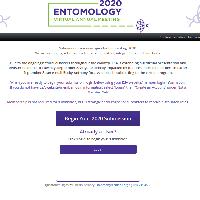Resumen
-
A greater taxonomic and functional diversity of natural enemies in agroecosystems is frequently positively associated with more effective pest control, due to the complementarity of species or traits. But this diversity has declined with landscape homogenization and loss of natural covers, particularly losing native species which play an important role in pest suppression within crops. We evaluated the effect of landscape on coccinellid communities, and the relative contribution of native coccinellids in shaping taxonomic and functional diversity of coccinellid communities in alfalfa fields. We characterized the landscape at 1 km radius surrounding 17 alfalfa fields, and the taxonomic and functional diversity of coccinellid communities collected throughout the season in alfalfa. Functional diversity indices considered: body size, habitat specialization, ubiquity and temporal variability. We associated landscape and taxonomic and functional indices with the abundance of native and exotic coccinellids, the proportion of natives in the community and the abundance of aphids. We found a positive association among native coccinellids in alfalfa and the amount of natural cover in the landscape. Also, we found a positive association among functional and taxonomic diversity indices with native coccinellids, and a negative association with exotics, demonstrating the contribution of native coccinellids in adding taxonomic and functional diversity to the aphidophagous communities in alfalfa fields. Our results highlight the need to promote appropriate management practices in agricultural landscapes in order to reduce native coccinellid species loss in alfalfa, maintain diversified species pool, and their potential of aphid suppression service.
